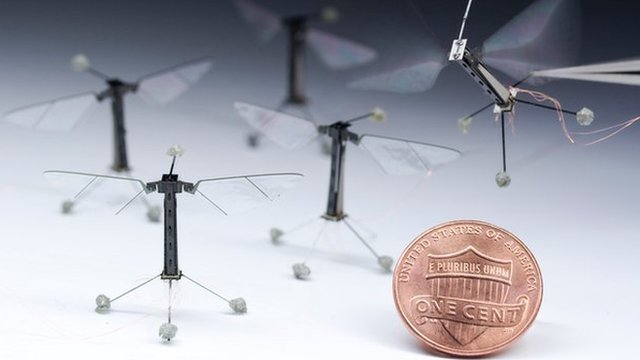Irish Women could be faced with spending their pregnancy in a psychiatric unit


A woman refused a termination on the grounds of suicidal intent could be forced to spend the remainder of her pregnancy in a psychiatric unit, Health Minister James Reilly has said.
He made the admission as controversy raged over whether the restrictions, in proposed X case legislation surrounding termination when there is threat of suicide, had been drawn too tightly.
Asked if a woman denied a termination could be kept in a psychiatric hospital for the rest of the pregnancy, Dr Reilly said that was not the intent of the legislation but such a situation could arise now.
“Well, that could happen at the moment if someone is psychotically depressed or has another psychosis,” he told RTÉ.
“I am aware of cases at the moment where that actually does apply. And the treatment there was certainly not to terminate the pregnancy.”
He said such cases would be dealt with by medical professionals in the normal manner.
“What we are talking about is committing a patient against their will, involuntarily, well of course that decision requires two doctors in any event at the moment as the law stands.
“No, that is not the intention [of the legislation]. We are leaving it to the doctors involved to use best medical practice. It would be inappropriate for me to prescribe what best practice is.”
In a case, where a woman threatening suicide was turned down for a termination and then went on to take her own life, Dr Reilly said the matter could end in legal action.
“In that situation, a court of law would decide where liability lay.”
He noted that as long as the doctors involved acted reasonably and followed best practice, they would not be “exposed” to such liability.
However, the minister said the legislation did not confer absolute immunity on any professional who acted in a negligent way.
He also said normal rules of medical priority would apply to ensure women seeking a termination on the grounds of suicidal intent were seen by psychiatrists and other experts as soon as possible.
He denied the proposed bill was too restrictive in the matter of suicidal intent and stated any further widening of the laws governing abortion could only come about via referendum which the Government and Fianna Fáil was not in favour of.
Dr Reilly said the Government could only act within the Constitutional provisions, and the boundaries of the X-case rulings when drawing up the Protection of Life During Pregnancy Bill 2013.
President Higgins intervenes in political debate on euro zone debt crisis


President Michael D Higgins warns that the EU must drop its ‘hegemonic’ economic model.
European leaders criticised in his most forthright remarks since taking the office.
President Michael D Higgins has intervened directly in political debate on the euro zone debt crisis, criticising the response of European leaders and the actions of the European Central Bank.
In some of his most forthright public remarks since taking office, Mr Higgins said the introduction of jointly-issued eurobonds could create scope to boost the economic recovery.
He also took issue with the failure of EU leaders to fulfil their pledge almost one year ago to break the link between bank and sovereign debt.
“It would have been of immense benefit naturally to growth, employment creation and investment if the … commitment of separating banking debt from sovereign debt had in fact been implemented,” Mr Higgins told the Financial Times in an interview.
“It would give you the opportunity to breathe and create growth in the economy.”
Mr Higgins’ remarks put him at odds with the response to the crisis of the German government, which has largely set the parameters for other member states.
The Merkel administration has faced down numerous demands for the joint issuance of sovereign debt and it is in the vanguard of the countries which are resisting demands for the ESM bailout fund to retrospectively compensate bailout recipients for taking on historic banking losses.
Stating that Europe faced a “moral crisis” as much as an economic crisis, the President said European leaders needed to make up their minds on the type of union they really wanted. There was a need for “radical economics” and a “radical rethink” of how EU leaders were handling the economic crisis, he said.
The President’s concerns about the crisis in Europe are well known.
In a speech to the European Parliament two weeks ago, he said Europe’s citizens were threatened with an unconscious drift to disharmony, a loss of social cohesion and a deficit of democratic accountability.
While he called then for the idealism, intellectual strength and moral courage that drove Europe’s founding fathers to be reasserted, he went further in his interview by directly tackling some of the most difficult policy questions faced by EU leaders.
He also questioned Europe’s basic economic model, saying there was a requirement for a multi-layered approach.
“There is a real problem in what was assumed to be a single hegemonic model,” he said.
“The unemployment profile in Greece is different from the unemployment profile in Ireland. You need a pluralism of approaches.”
Adding his voice to the fractious debate over the mandate of the ECB, the president said the Frankfurt-based central bank should act to fuel economic growth.
Ireland was unusual in its acceptance of such a high degree of cuts when compared to other euro zone countries, he argued.
“The polite version is that we are pragmatists,” Mr Higgins said. “What we really need now is something that goes beyond outrage and recrimination.”
Alan Shatter frustrated at judges ways of determining sentences for those convicted
Minister for justice says judiciary must exercise ‘independent discretions’ when determining sentences
Minister for Justice Alan Shatter said it is ‘important that the community service order scheme is utilised to a greater extent than it is being utilised at present’.
Minister for Justice Alan Shatter has expressed his “disappointment” that judges are largely ignoring new legislation aimed at encouraging them to impose community service on criminals as an alternative to short prison sentences.
Mr Shatter denied suggestions he was interfering with the independence of the judiciary just weeks after a dispute emerged between him and the judges, many of whom believed at the time that their independence was being undermined by the Minister.
“Our judiciary must exercise their independent discretions whence determining the nature of sentences to be imposed,” Mr Shatter said at the annual conference of the Prison Officers’ Association in Athlone, Co Westmeath, today.
“But it is important that the community service order scheme is utilised to a greater extent than it is being utilised at present.”
Mr Shatter said he was disappointed that it is not being utilised to a greater and expressed his hope it will be in future.
Figures released by the Irish Prison Service today suggest most judges are not acting on the provisions encouraging them away from such short sentences.
Last year there were 17,026 committals to Irish prisons. Of these some 13,526 were under sentence, while others were remand prisoners awaiting trial. Of the 13,526 sent to jail to serve sentences, some 11,844, or 88 per cent, were jailed for less than a year.
This is despite the new Community Service Amendment Act enacted in 2011 stipulating that judges must consider non-custodial alternatives to jailing a person for a term of less than one year.
The provision is aimed at reducing prison population numbers and engaging offenders with work in the community as well as rehabilitation for drug or alcohol abuse.
There is no obligation on judges to opt for a community service option as an alternative to jail terms of one year or less but they are urged to consider it.
Mr Shatter said he would monitor the situation and may amend the legislation if he deemed that necessary. He believed too many people were being sent to prison unnecessarily at a time when legislation had been introduced to encourage community-based sanctions and when the Probation Service had spare capacity to take in more offenders.
“I am anxious that the community service order scheme is utilised to a great extent. It means that people who have committed a crime pay back their community, do something of positive value and also reduces the expenditure of the prison service and also reduces overcrowding in the prisons. So this is very important issue in the public interest.”
“If it turns out that the legislation is not working correctly, that is something I would have to reflect on as Minister for Justice. There is a legislative provision enacted and if it turns out that it needs to be better structured or amended that’s always something that a Minister could consider doing.”
Mr Shatter also denied a new community return scheme, under which compliant and non violent offenders are released early if they engage properly with the probation services on release, was a new revolving door system under a different name.
“In the context of this scheme, which is innovative and successful, 90 per cent of those who have engaged in the scheme have fully and properly committed and completed their community service term. The other 10 per cent have been returned to jail but haven’t created any major difficulties of which I am aware. They have simply failed to comply with their community service obligations. We have to do things differently, we have to change the manner in which will deal with (offenders).”
A new brain implant could now predict epilepsy seizures


A brain implant may be able to predict epilepsy seizures by picking up the early warning signs, a small study suggests.
The device uses the brain’s electrical activity to tell patients if their risk of a seizure is high, moderate or low.
The study on 15 people, published in the Lancet Neurology, showed the device worked in some patients.
The charity Epilepsy Action cautioned that it was still early days, but said it could be an “exciting development”.
Epilepsy is thought to affect 50 million people worldwide. Abnormal activity in part of the brain causes seizures involving involuntary shaking.
Independence impact
Signals were collected from the surface of the brain and sent down wires to another implant in the chest. This beamed the data to a hand-held device which worked out the odds of a seizure.
The trial was run at three hospitals in Australia and was funded by the manufacturers Neuro-Vista.
If a person is able to be alerted when they are about to have a seizure, this could help them to take steps to make sure they are safe during the seizure”
The results were mixed. For the first four months the brain was monitored so the system could learn a patient’s brainwaves before a seizure.
Only eight patients then progressed to the stage where the device was fully activated and they were constantly informed of their chance of a seizure. It was between 56% and 100% effective in those patients.
Prof Mark Cook, from the University of Melbourne, said if the technology could be proven if could help remove the unpredictable nature of epilepsy.
He told the BBC: “Being able to predict the events with many minutes or hours lead time could have significant impact on independence.
“This could change the way the illness is treated. For instance, our current strategy of giving medications continuously because of the unpredictable occurrence of events could alter the types of medications being developed.
“Short-acting therapies may prove to be effective without subjecting patients to the long-term problems that currently available therapies may cause.”
‘Useful tool’
Commenting on the findings, Christian Elger and Florian Mormann, from the University of Bonn medical centre, described the results as “a major milestone… showing for the first time, to our knowledge that prospective seizure prediction is possible”.
They added: “Whether this performance is also sufficient for clinical applications is unclear, this will depend on how well patients tolerate false alarms or missed seizures.”
Simon Wigglesworth, deputy chief executive of Epilepsy Action, said more research was needed, particularly given the “small sample size and the inconsistencies in the data collected”.
“If a person is able to be alerted when they are about to have a seizure, this could help them to take steps to make sure they are safe during the seizure. The device could also be a useful tool for carers of people with epilepsy,” he said.
“Predicting seizures may help us to understand more about the ways seizures can be managed and ultimately prevented.”
Galway Girl dies after being hit by car when walking with friend


GARDAI ARE APPEALING FOR WITNESSES AFTER A GIRL DIED FOLLOWING A COLLISION WITH A CAR. A 15-YEAR-OLD GIRL HAS DIED AFTER BEING HIT BY A CAR IN CO GALWAY.
The teenager was walking with a friend in the Ros a Mhil area when the accident happened at 9.45pm on Wednesday.
She was taken to University College Hospital, Galway, where she was pronounced dead late on Wednesday night.
Her friend and the man driving the car were not injured.
The road remains closed for forensic examination.
Gardai have appealed for witnesses to contact Salthill garda station.
World’s smallest flying robot takes off


Scientists in the US have created a robot the size of a fly that is able to perform the agile manoeuvres of the ubiquitous insects.
This “robo-fly”, built from carbon fibre, weighs a fraction of a gram and has super-fast electronic “muscles” to power its wings.
Its Harvard University developers say tiny robots like theirs may eventually be used in rescue operations.
It could, for example, navigate through tiny spaces in collapsed buildings.
It will take “a few more years” before the robo-flies will be able to carry a power source
Dr Kevin Ma from Harvard University and his team, led by Dr Robert Wood, say they have made the world’s smallest flying robot.
It also has the fly-like agility that allows the insects to evade even the swiftest of human efforts to swat them.
This comes largely from very precise wing movements.
By constantly adjusting the effect of lift and thrust acting on its body at an incredibly high speed, the insect’s (and the robot’s) wings enable it to hover, or to perform sudden evasive manoeuvres.
And just like a real fly, the robot’s thin, flexible wings beat approximately 120 times every second.
The researchers achieved this wing speed with special substance called piezoelectric material, which contracts every time a voltage is applied to it.
By very rapidly switching the voltage on and off, the scientists were able to make this material behave like just like the tiny muscles that makes a fly’s wings beat so fast.
Flapping and flying: As an insect’s wings move through the air, they are held at a slight angle, deflecting the air downward.
This deflection means the air flows faster over the wing than underneath, causing air pressure to build up beneath the wings, while the pressure above the wings is reduced. It is this difference in pressure that produces lift.
Flapping creates an additional forward and upward force known as thrust, which counteracts the insect’s weight and the “drag” of air resistance.
The downstroke or the flap is also called the “power stroke”, as it provides the majority of the thrust. During this, the wing is angled downwards even more steeply.
You can imagine this stroke as a very brief downward dive through the air – it momentarily uses the weight of the animal’s own weight in order to move forwards. But because the wings continue to generate lift, the creature remains airborne.
In each upstroke, the wing is slightly folded inwards to reduce resistance.
“We get it to contract and relax, like biological muscle,” said Dr Ma.
The main goal of this research was to understand how insect flight works, rather than to build a useful robot.
He added though that there could be many uses for such a diminutive flying vehicle.
“We could envision these robots being used for search-and-rescue operations to search for human survivors under collapsed buildings or [in] other hazardous environments,” he said.
“They [could] be used for environmental monitoring, to be dispersed into a habitat to sense trace chemicals or other factors.
Dr Ma even suggested that the robots could behave like many real insects and assist with the pollination of crops, “to function as the now-struggling honeybee populations do in supporting agriculture around the world”.
The current model of robo-fly is tethered to a small, off-board power source but Dr Ma says the next step will be to miniaturise the other bits of technology that will be needed to create a “fully wireless flying robot”.
“It will be a few more years before full integration is possible,” he said.
“Until then, this research project continues to be very captivating work because of its similarity to natural insects. It is a demonstration of how far human engineering ingenuity has reached, to be mimicking natural systems.”
Dr Jon Dyhr, a biologist from the University of Washington who also studies insect flight, said these flying robots were “impressive feats of engineering”.
“The physics of flight at such small scales is relatively poorly understood which makes designing small flying systems very difficult,” he told BBC News, adding that biological systems provided “critical insights into designing our own artificial flyers”.


No comments:
Post a Comment